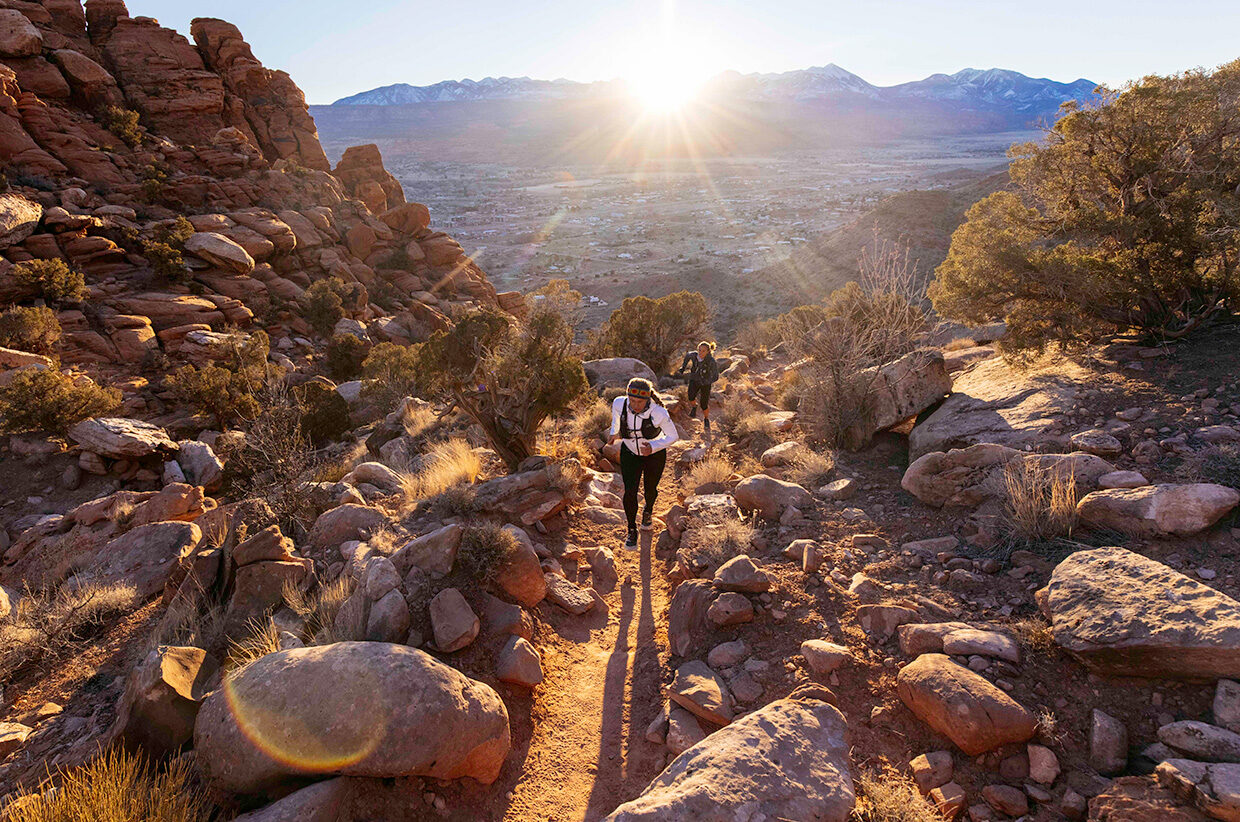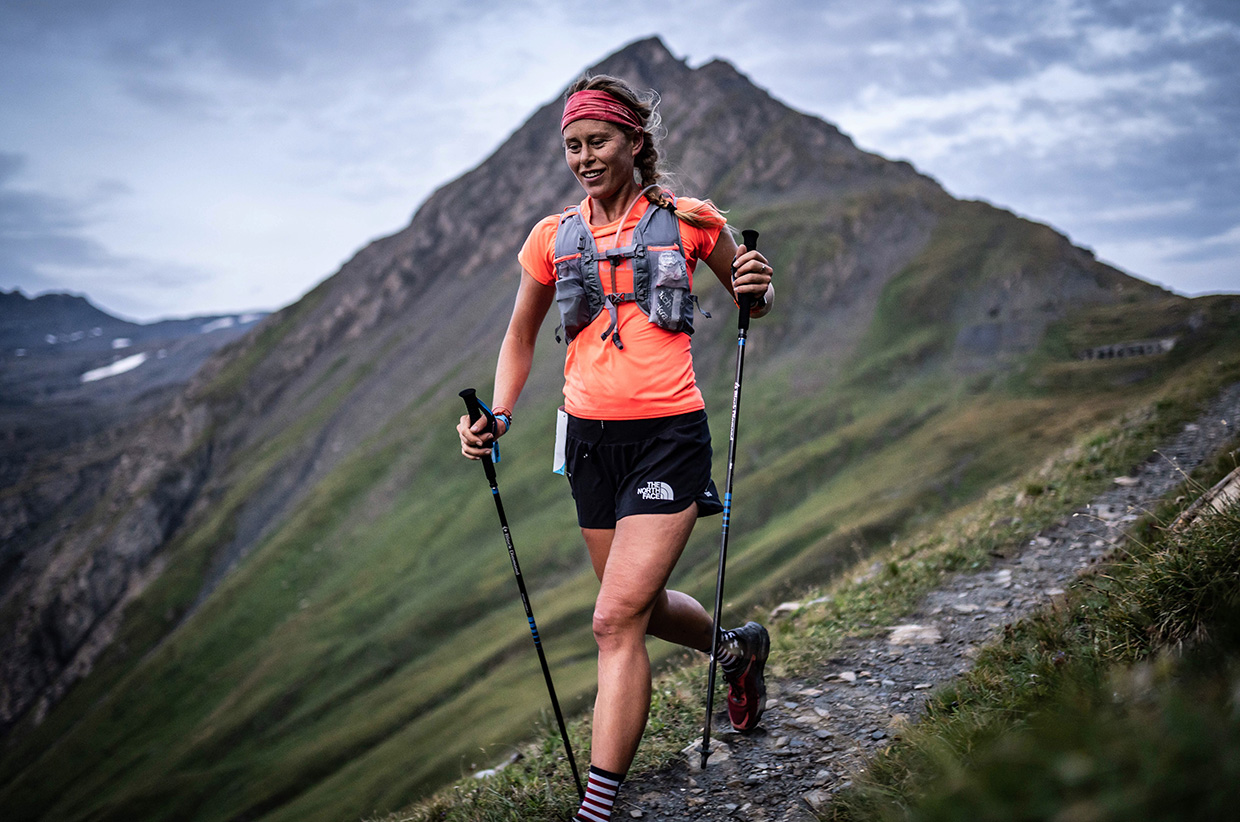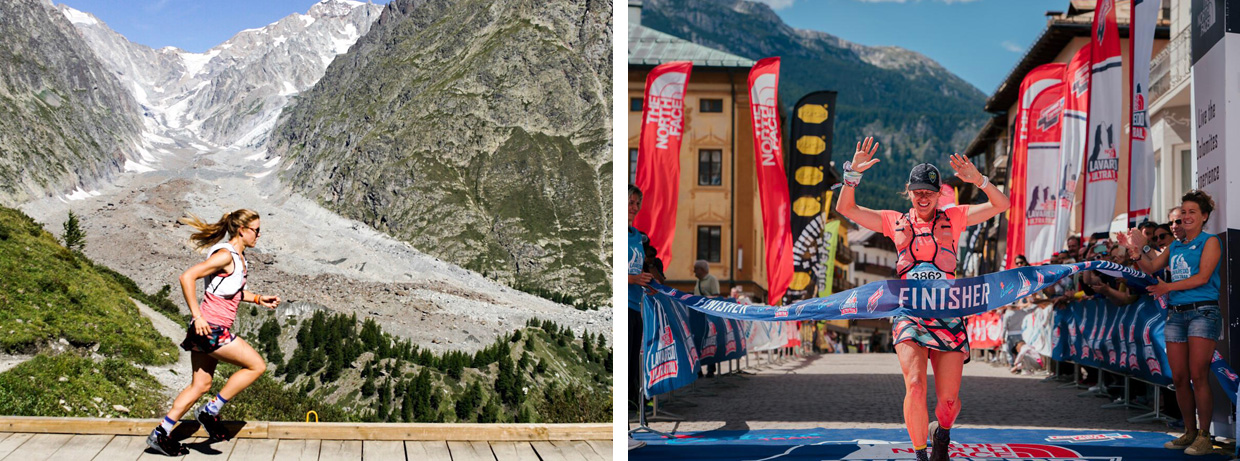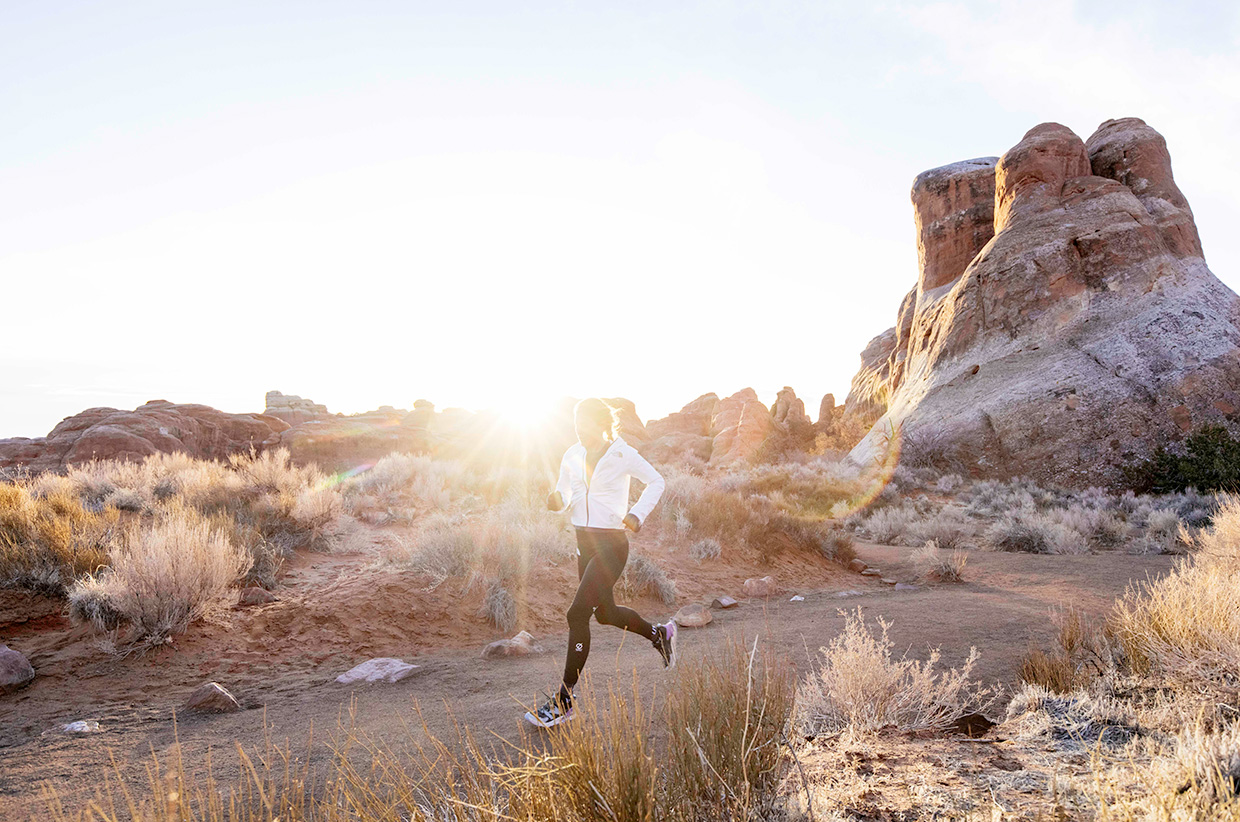Out and Back – Hillary Allen
Survive Photo: Luke Webster
Photo: Luke Webster
A Runner’s Story of Survival and Recovery Against All Odds
Written by Jenny Tough
I was still in denial. What accident? What had happened? Someone fell? Who fell? Was it me? Why couldn’t I move? Why was I there? I was scared and alone.’ —Hillary Allen (excerpt)
In 2017, world-class ultrarunner Hillary Allen was at the top of her sport, and racing near the front of Norway’s 50km Tromsø Skyrace when she fell 150ft off an exposed ridge, breaking two ribs, fracturing her back, rupturing a ligament in her foot, and breaking both wrists. Beginning with the dramatic story of her accident and rescue, Out and Back: A Runner’s Story of Survival and Recovery Against All Odds recounts Allen’s fight to return to the life she loves.
In this deeply personal story of recovery, Allen reveals her most vulnerable moments with strength and wisdom, and shares her process of self-discovery along the way. Her book challenges notions of success and ego, and praises vulnerability and growth.
Sidetracked had the chance to speak to Hillary at her home in Boulder, CO, just as her book hit local store shelves.
Sidetracked: In this book, you have to begin by taking readers to one of your darkest places, and any athlete’s worst nightmares – your accident at Tromsø and the process of surgeries and recovery following that. How was the process of writing that – and having to relive that period of your life?
Hillary Allen: I’ve always used writing as a way to express and share my thoughts in an honest way, but when I realised that the book would be read by strangers, I hit a wall, and it took me a while to get started. Then, during the process of writing, I got injured again (which I wrote about in the book), so I really had to relive the whole thing – going through the same emotions and the physical process of an injury at the same time as writing about my accident. It really put me back in those spaces again, being in recovery. It was really cathartic.
You talk about the risks that mountain athletes take in order to pursue the sports that we love. While the ultrarunning community continues to push for further and faster efforts, with big stars using social media to share their incredible abilities, how does that affect our community’s perception of risk?
I think that everyone has to decide their own level of risk. Social media provides a sense of inspiration and access to this community – the message is sort of ‘you can do this too’. But people can misunderstand how many hours athletes like us have spent developing our skills. The risk is the same for all of us – my accident happened on terrain I was comfortable on, and had trained on – but, the more time you spend practising and developing your skills, the more tools you have in your toolbelt and the more comfortable you can be in those environments.
You accept the risk every time you enter this playground. For me, it’s about gaining confidence and working on my mountain skills again. But again, risk is so individual and everyone needs to take responsibility for deciding themselves.
‘I know I must take certain risks in order to do what I love. Even though my accident changed my life and nearly killed me, I understood and accepted that these things can happen.’



Your publication date has unfortunately eclipsed another injury – how are you coping?
I’m not sure what the universe is trying to tell me right now! It feels draining, emotionally and physically, to be here again. I think that the recovery process changes every time you go through it, but this one definitely seems ironic – to be injured while promoting my book about recovering from an injury.
I was surprised to read about your struggles with body image and eating disorders, although there is a turning tide; lots of athletes are admitting to these struggles. Where do you think that’s going in the sport?
Honestly, it was a scary thing to put in the book. It’s raw and vulnerable, and I pride myself on being strong and positive. But trail running is one of the things that saved me from a toxic environment in college sports [tennis] – trail running is a place where I can celebrate my body’s strength, but when I’m injured, there’s a big battle in my mind about it.
There is a real pressure in our culture to diet. I made a pact with myself not to be part of that, and focus on being a healthy athlete, but it doesn’t mean that I’m exempt from thinking these things. I’ve seen far too many female athletes in ultrarunning see some success and then go too extreme and fall victim to low energy and long-term problems. Personally, I avoid that environment, and focus on what matters to me and why I run. Focus on the people who lift me up. I think that’s what anyone who worries about their own health should do – just unfollow people on social media who make you feel bad.
‘Not being able to run was devastating, and the fear surrounding my return was debilitating, but it also forced me to take it easy, look at situations differently, and seek out new ways to engage with myself.’
What does your return to competitive running look like?
I don’t like the word comeback – that implies you’re coming back to someone who you were before. As athletes, it seems like we’re always chasing our fastest time, continuing to lose weight, not get older. I had to switch to believe that my best days are still ahead of me – so I was not coming back to my old self, I was coming back with new experiences, new knowledge, and new goals.
For more information and ways to buy Hillary’s book, visit hillaryallen.com/out-and-back-a-runners-story-of-survival-and-recovery-against-all-odds/
You can follow Hillary on Instagram @hillygoat_climbs.
Written by Jenny Tough // @jennytough




